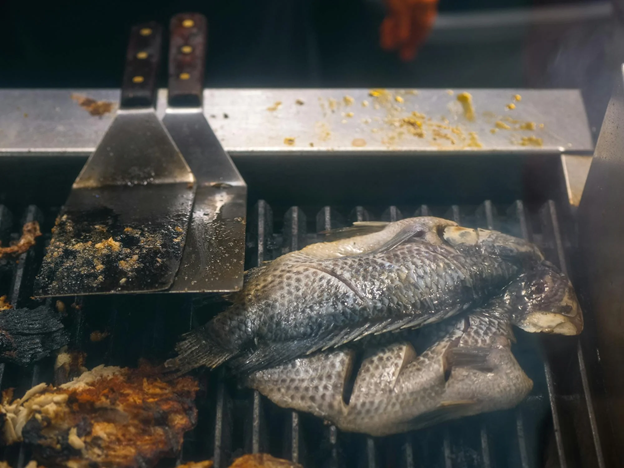In the rich tapestry of global cuisines, cassasse stands out as a dish that is not only deeply embedded in the culinary traditions of its origin but also resonates with the contemporary quest for authentic and flavorful experiences. This article delves into the historical roots of cassasse its ingredients, preparation methods, and cultural significance, offering a comprehensive guide to understanding and appreciating this unique dish.
The History of Cassasse
Cassasse has a storied past that dates back centuries, originating from regions where traditional cooking methods and local ingredients were harmoniously combined to create dishes that are both nutritious and flavorful. While the specific origins can vary, cassasse is often associated with African, Caribbean, and South American cuisines, where it evolved from the ingenious use of available resources to feed communities.

The Ingredients of Cassasse
The core ingredients of cassasse reflect its connection to the earth and the seasons. Typically, cassasse includes a base of root vegetables such as cassava or yams, combined with meats or fish, and enriched with spices and herbs unique to its region of origin. This combination not only provides a rich array of flavors but also a balanced nutritional profile.
How to Cook Cassasse
Preparing cassasse is a labor of love that involves several steps, each crucial to achieving the dish’s signature depth of flavor. The process usually starts with the preparation of the base ingredients, which are then slow-cooked to perfection. The method can vary significantly from one region to another, with some versions being baked, while others are stewed or even fermented.
The Flavorful Journey
Eating cassasse is more than just a meal; it’s an experience that transports you through time and geography. The dish’s complexity comes from its blend of flavors, which can range from the earthiness of the root vegetables to the warmth of the spices and the richness of the meats or fish. Each bite is a testament to the culinary traditions and skills passed down through generations.

Benefits of Cassasse
Beyond its delicious taste, cassasse offers numerous health benefits. It is typically rich in dietary fiber, vitamins, and minerals, thanks to its vegetable base and the inclusion of lean proteins. Additionally, the spices and herbs used in cassasse are known for their antioxidant and anti-inflammatory properties.
Instructions for Making Cassasse
- Select the Base: Choose your root vegetables, such as cassava or yams, and prepare them by peeling and cutting into pieces.
- Choose Your Protein: Select meats, fish, or a vegetarian protein alternative.
- Prepare the Spices and Herbs: Gather the spices and herbs typical of the cassasse variant you are preparing.
- Cooking Process: Combine the ingredients according to the specific method of the cassasse variant you’re making, whether it’s stewing, baking, or fermenting.
- Serve and Enjoy: Cassasse is best enjoyed fresh, often accompanied by side dishes that complement its flavors.
Cassasse’s Historical Role and Cultural Importance
Cassasse has played a significant role in the survival and cultural identity of many communities. It represents a culinary tradition that has been preserved and passed down through generations, embodying the resilience and creativity of the people who created it.
The Cassasse Phenomenon
Today, cassasse is experiencing a resurgence as chefs and food enthusiasts seek to explore and celebrate traditional dishes. This renewed interest has led to the dish being adapted and served in restaurants worldwide, introducing it to a broader audience.
The Cassasse Community
The global appreciation of cassasse has fostered a community of enthusiasts who share recipes, cooking techniques, and stories connected to the dish. This community plays a crucial role in keeping the tradition alive and relevant in the modern culinary landscape.
Conclusion
Cassasse is more than just a dish; it’s a celebration of culture, history, and the enduring human spirit. Its preparation and enjoyment connect us to the past and to each other, offering a delicious way to explore and appreciate the world’s culinary diversity.
FAQs
Is cassasse gluten-free?
Yes, cassasse is typically gluten-free, as its base is usually made from root vegetables like cassava or yams.
Can cassasse be made vegetarian?
Absolutely. While traditional recipes may include meat or fish, there are many vegetarian adaptations that use plant-based proteins.
How long does it take to cook cassasse?
- he cooking time can vary widely depending on the specific recipe and method, ranging from a couple of hours for stewed versions to longer for fermented ones.
Is cassasse spicy?
The spice level of cassasse can vary. While some versions are mild, others incorporate fiery spices for added heat.
Can cassasse be found in restaurants?
Yes, as the dish gains popularity, more restaurants are offering cassasse on their menus, especially those specializing in African, Caribbean, and South American cuisines.


